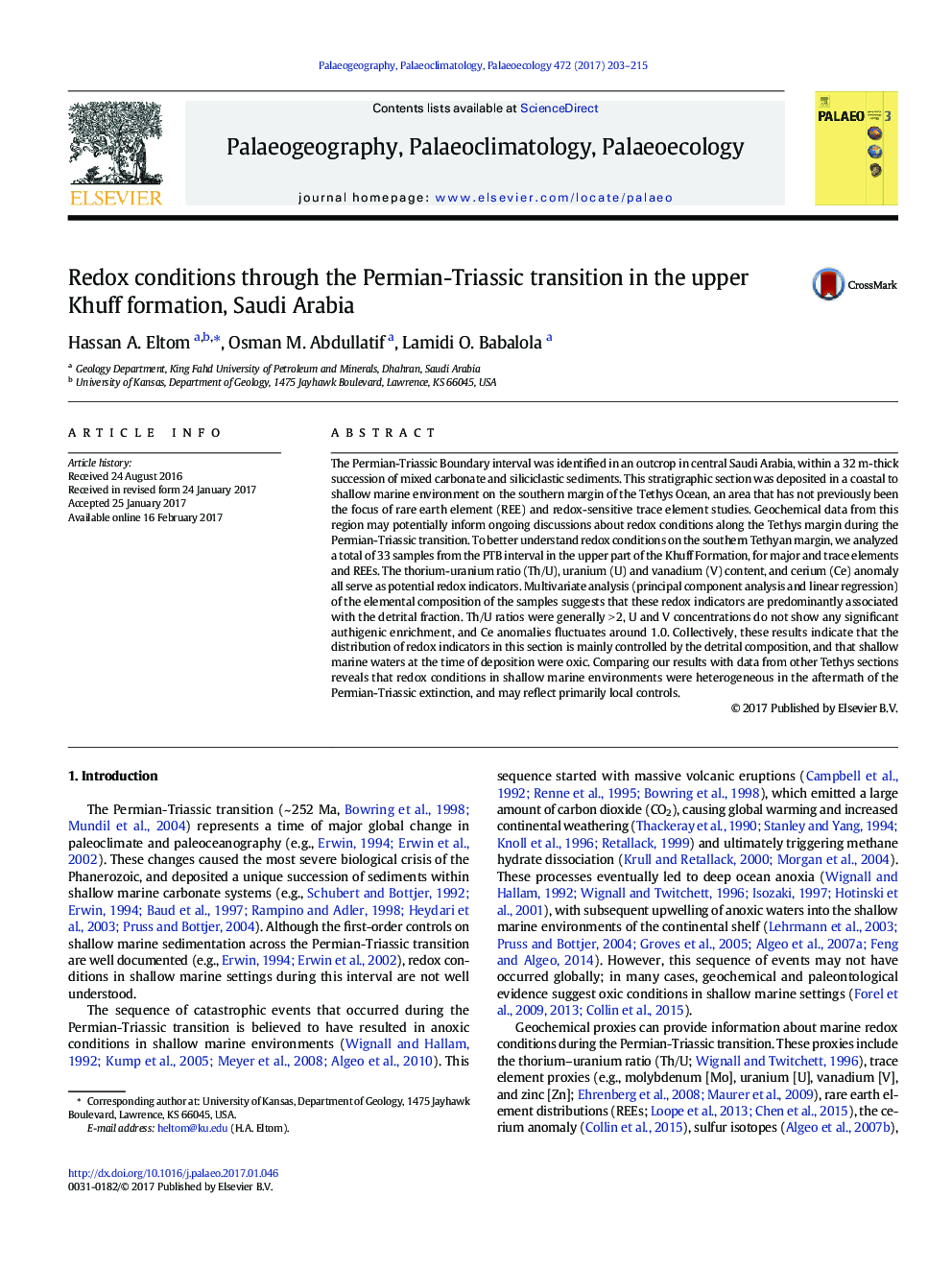| کد مقاله | کد نشریه | سال انتشار | مقاله انگلیسی | نسخه تمام متن |
|---|---|---|---|---|
| 5755872 | 1622120 | 2017 | 13 صفحه PDF | دانلود رایگان |

- First trace and rare earth elements analysis for the Permian Triassic boundary in Saudi Arabia, Southern Tethys Margin
- Th/U, U, V, and Ce anomaly serve as redox indicators.
- The results suggest anoxic to suboxic shallow marine waters for the Triassic microbialite sequences.
The Permian-Triassic Boundary interval was identified in an outcrop in central Saudi Arabia, within a 32Â m-thick succession of mixed carbonate and siliciclastic sediments. This stratigraphic section was deposited in a coastal to shallow marine environment on the southern margin of the Tethys Ocean, an area that has not previously been the focus of rare earth element (REE) and redox-sensitive trace element studies. Geochemical data from this region may potentially inform ongoing discussions about redox conditions along the Tethys margin during the Permian-Triassic transition. To better understand redox conditions on the southern Tethyan margin, we analyzed a total of 33 samples from the PTB interval in the upper part of the Khuff Formation, for major and trace elements and REEs. The thorium-uranium ratio (Th/U), uranium (U) and vanadium (V) content, and cerium (Ce) anomaly all serve as potential redox indicators. Multivariate analysis (principal component analysis and linear regression) of the elemental composition of the samples suggests that these redox indicators are predominantly associated with the detrital fraction. Th/U ratios were generally >Â 2, U and V concentrations do not show any significant authigenic enrichment, and Ce anomalies fluctuates around 1.0. Collectively, these results indicate that the distribution of redox indicators in this section is mainly controlled by the detrital composition, and that shallow marine waters at the time of deposition were oxic. Comparing our results with data from other Tethys sections reveals that redox conditions in shallow marine environments were heterogeneous in the aftermath of the Permian-Triassic extinction, and may reflect primarily local controls.
Journal: Palaeogeography, Palaeoclimatology, Palaeoecology - Volume 472, 15 April 2017, Pages 203-215